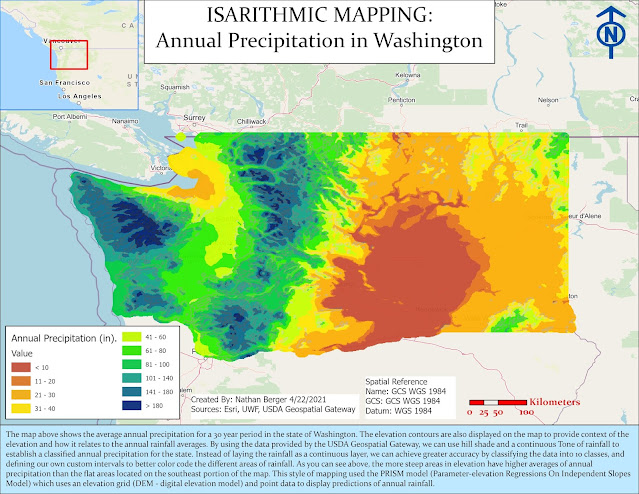Cartography: How To Make A Great Map
Let's Talk About Map Making Design Principles!
These principles allow us to understand maps, read maps, and use maps to solve complex problems. The science of designing maps follows a set of rules to help guide us in the map making process. In doing so, excellent maps can be produced to solve real world problems.
This concept is known as "Cartography"
OR
"The science of drawing maps"
A map, essentially, is a drawing or depiction of a geographic area displaying data and relationships between objects and space. It can have a theme, colors, symbology, data layers, text, pictures, coordinates, grids, and all sorts of information.
In this process, we use the 20 Tufteisms as a kind of rule book during the map making process. These 20 rules are detailed below. They help GIS users build good maps, with strong messages that are easy to convey.
- 1. Graphical excellence is the well-designed presentation of interesting data – a matter of
- substance, of statistics, and of design.
- 2. Graphical excellence consists of complex ideas communicated with clarity, precision, and
- efficiency.
- 3. Graphical excellence is that which gives to the viewer the greatest number of ideas in the
- shortest time with the least ink in the smallest space.
- 4. Graphical excellence is nearly always multivariate.
- 5. Graphical excellence requires telling the truth about the data.
- 6. The representation of numbers, as physically measured on the surface of the graphic itself,
- should be directly proportional to the numerical quantities represented.
- 7. Clear, detailed, and thorough labeling should be used to defeat graphical distortion and
- ambiguity.
- 8. Write out an explanation of the data on the graphic itself. Label important events in the data.
- 9. Show data variation, not design variation.
- 10. In time-series displays of money, deflated and standardized units of monetary
- measurement are nearly always better than nominal units.
- 11. The number of information-carrying (variable) dimensions depicted should not exceed the
- number of dimensions in the data.
- 12. Graphics must not quote data out of context.
- 13. Above all else, show the data.
- 14. Maximize the data-ink ratio.
- 15. Erase non-data-ink.
- 16. Erase redundant data-ink.
- 17. Revise and edit.
- 18. Forgo chart junk.
- 19. If the nature of the data suggests the shape of the graphic, follow that suggestion.
- Otherwise, move toward horizontal graphics about 50 percent wider than tall.
- 20. The revelation of the complex.
There are also 6 Commandments used when making maps...
2. Don't Lie With Maps
3. Label Maps Correctly
4. Cut Out Data That Doesn't Matter, "Clear Up The Clutter", More Is Less\
5. Use Your Map Layout Carefully
6. Review Your Map Before Publishing It
Example:
T-MOBILE NATIONWIDE 5G. (2019, DEC 02). T‑Mobile 5G: It’s On! America’s First Nationwide 5G Network Is Here. https://www.t-mobile.com/news/press/americas-first-nationwide-5g-network
I am not saying that T-Mobile is lying about their network coverage, but I am saying that this map could be skewed to represent more coverage than what actually is provided by the company. Doesn't it look like they provide 5G to almost the entire country? The colors used for 4G and 5G are very similar, aren't they? Seems to be a little bit misleading...








Comments
Post a Comment